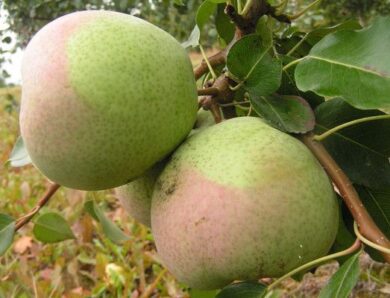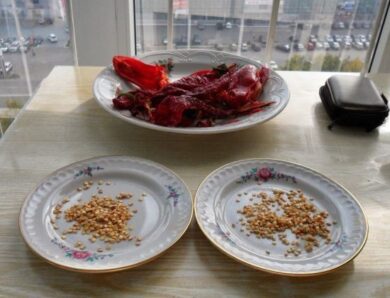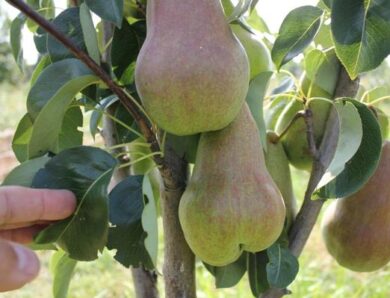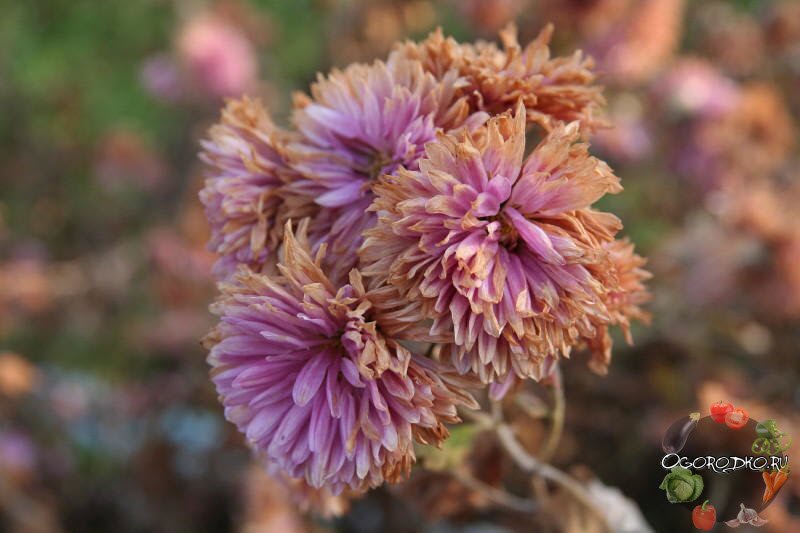
Chrysanthemum diseases and their treatment are signs of the disease, than to spray + Photo
For many flower growers, chrysanthemum diseases and their treatment are manifested by a whole stream of problems due to incorrect identification of the initial signs, resulting in even greater damage to flowers. Septoria leaves, storm of aphids, white plaque, powdery mildew, the lower leaves wither and dry out, turn yellow - all these signs may indicate the presence of disease, which must be displayed…
Treatment of fungal and viral diseases
Chrysanthemums have a relatively stable immunity, so timely prevention will help avoid problems. But, if the flower is still sick, useful to know, what are the diseases of chrysanthemums and their treatment.
The most common fungal infections of chrysanthemums, to them lead to density of landings, and in this regard, poor ventilation, also heat, high soil acidity, excess nitrogen content in the soil. With fungi of various origins on chrysanthemums effectively cope with fungicides - Bordeaux liquid, copper chloride, colloidal sulfur, Fundazol.
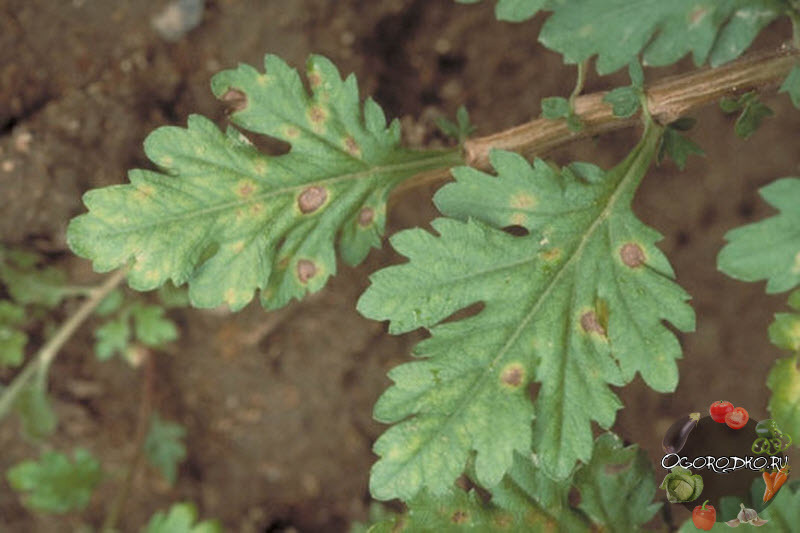
Septoria chrysanthemum leaves
Why chrysanthemums dry lower leaves? This is often a sign of septoria, which makes itself felt by the appearance of yellow spots, usually, it is on the lower leaves of chrysanthemums, closest to the earth's surface - the spots darken, acquire a brown tint, then turn black, spread over the surface, as if healthy greens are burning.
What shall I do:
- Darkened vegetation is uprooted and burned
- Infected specimens are sprayed with fungicides
- Withered vegetation should be removed in time for prevention in flower beds and in the site as a whole.
Rust
Pale spots appear on the outside of chrysanthemum leaves, and on the inside they are floury-orange, rust reduces the intensity of flowering, as it takes a lot of effort to fight the infection.
What shall I do:
- Infected leaves are removed immediately
- Shrubs are treated with fungicides
- Plantings are thinned to improve air circulation
- Watered strictly under the root, water should not fall on the leaves
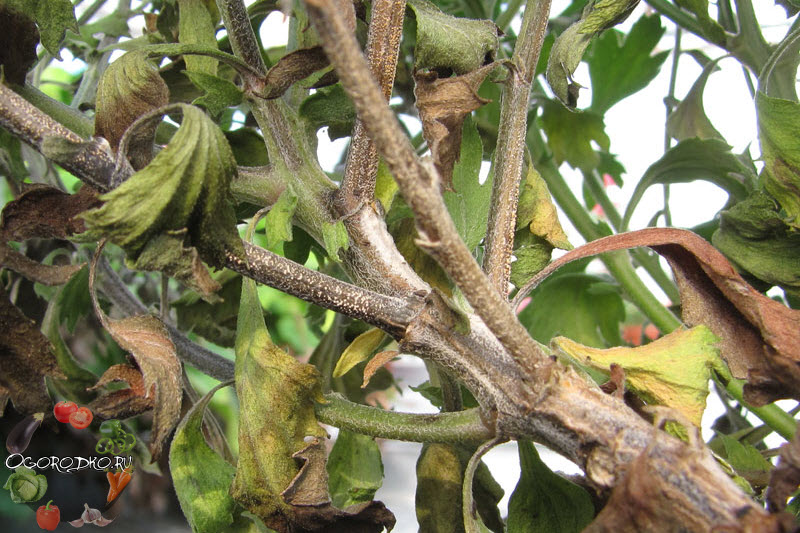
Septoria chrysanthemum leaves
If the chrysanthemum leaves turn yellow, this may be the first sign of fusarium wilt - a disease, caused by the fungus Fusarium. Sick flower experiences an acute lack of moisture, as the fungus infects the roots and impedes the flow of water, necessary for the growth of chrysanthemums. Affected specimens slow down development, they lag behind in growth, and it often does not come to flowering.
What to do in such cases:
- Infected completely remove the bushes
- Choose varieties with high resistance to fusarium wilt
- The soil should be slightly acidic or neutral, with pH level 6,5 — 7,0
Powdery mildew
A sign of this fungal disease is a dirty white powdery mildew on chrysanthemums, often occurs in humid environments, therefore widespread in wet rainy weather.
How to help the plant:
- Infected parts are removed
- Shrubs are carefully treated with fungicides
Mosaics
In total, at least two dozen viral infections are known, to which the beautiful autumn chrysanthemum is prone - aspermia, dwarfism, white spotted flowers, outlet and others. One of the most dangerous viruses for chrysanthemums is mosaic, affected specimens lag behind in development, grow poorly, they have yellow leaves, flowers become smaller.
What shall I do:
- Septoria chrysanthemum leaves
- The area is regularly cleared of weeds
Pests and pest control
Chrysanthemum diseases and their treatment are not only the destruction of infectious agents, but also pests - from aphids, spider mite, meadow bug, slobbery penny, tobacco thrips, leaf nematode is controlled mainly by insecticides.
Leaf nematode
Nematodes are tiny worms, affect not only the chrysanthemum, but also many other flowers and shrubs, they often overwinter in the beds, remnants of vegetation, so be sure to clean them in the fall.
On the leaves of chrysanthemums, to which the nematode got, yellow-brown spots appear, which gradually occupy the entire sheet, and he perishes, first the leaves at the bottom of the stem die, then the pest spreads to all above the trunk. If you do not take action, the whole bush dies.
What shall I do:
- Destroy not only the sick specimen, including roots, but also the surrounding soil
- In the spring, the ground around the flowers is mulched - this prevents the appearance of nematodes
- Water when watering should not fall on the leaves; 4. At the initial stage, you can apply a leaf spray, which contains green soap - an organic insecticide, including potassium salts of fatty acids and vegetable oils
Ashes
Greenhouse aphids and brown aphids settle on chrysanthemums. The first, green or pink, settles on the reverse side of the letters, on buds and flowers, and feeds on their cellular juice. Brown aphid lives in inflorescences, without damaging them, but polluting their products of life.
What shall I do:
- Shrubs are sprayed with any of the insecticides - Aktellik, Bi-58 is new, Karate
- A solution of copper sulphate is also prepared (20 G) and liquid soap (200 G) on 10 And water
Insecticides also fight other pests, but the symptoms of insect infestation are different:
- slobbering penny, or cicada, absorbs the juice of chrysanthemum flowers, covering the plant with foam
- meadow, or field bug deforms the leaves, chrysanthemum buds and flowers, interfering with flowering plants
- spider mite weaves a web on the underside of chrysanthemum leaves, which turn yellow and wither. Hot weather contributes to the spread of the pest. Spider mite easily adapts to drugs, therefore it is necessary to use various pesticides in turn, folk methods are also used - spraying infusion of blackberries, dope, yarrow, garlic, onions
Non-communicable diseases
Errors in the technology of growing chrysanthemums can lead to diseases - the state of the soil, feeding and watering affect the development of autumn flowers, violation of the conditions of care weakens them, and this is a direct path to infection with various infections.
Florists are familiar with this concept, as "root suffocation", the root system literally suffocates from excess moisture and lack of air in the soil, if it is clayey, not well drained and flooded with rain. In plants, which is forced to exist in such conditions, yellow leaves, rot the roots, and as a result she dies.
The inability to absorb excess moisture leads to this, that a crack appears under the bud on the stem, future chrysanthemum flower breaks off or deforms. On the other hand, lack of moisture in the soil also suppresses chrysanthemum bushes, the leaves become sluggish, reduced resistance to disease. Low ambient temperatures lead to yellowing or reddening of the leaf along the veins.
Unbalanced fertilization with organic and mineral fertilizers also weakens the plant. Example, you can not fertilize flowers with fresh manure. This burns the roots and weakens, making it available for infection.
Diseases of chrysanthemums and their treatment will not give flower growers special problems, if you follow the rules of care and be attentive to their colors.

